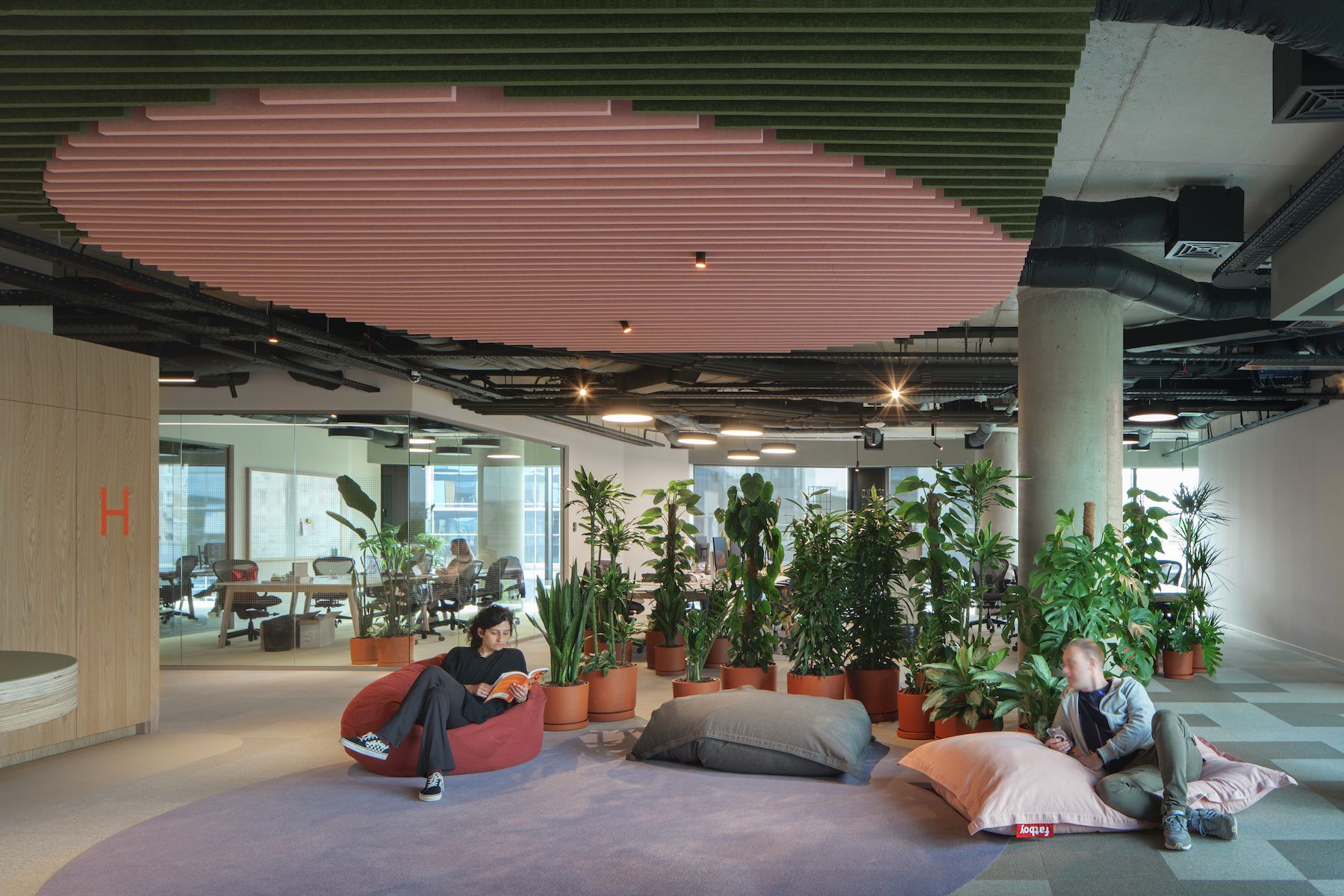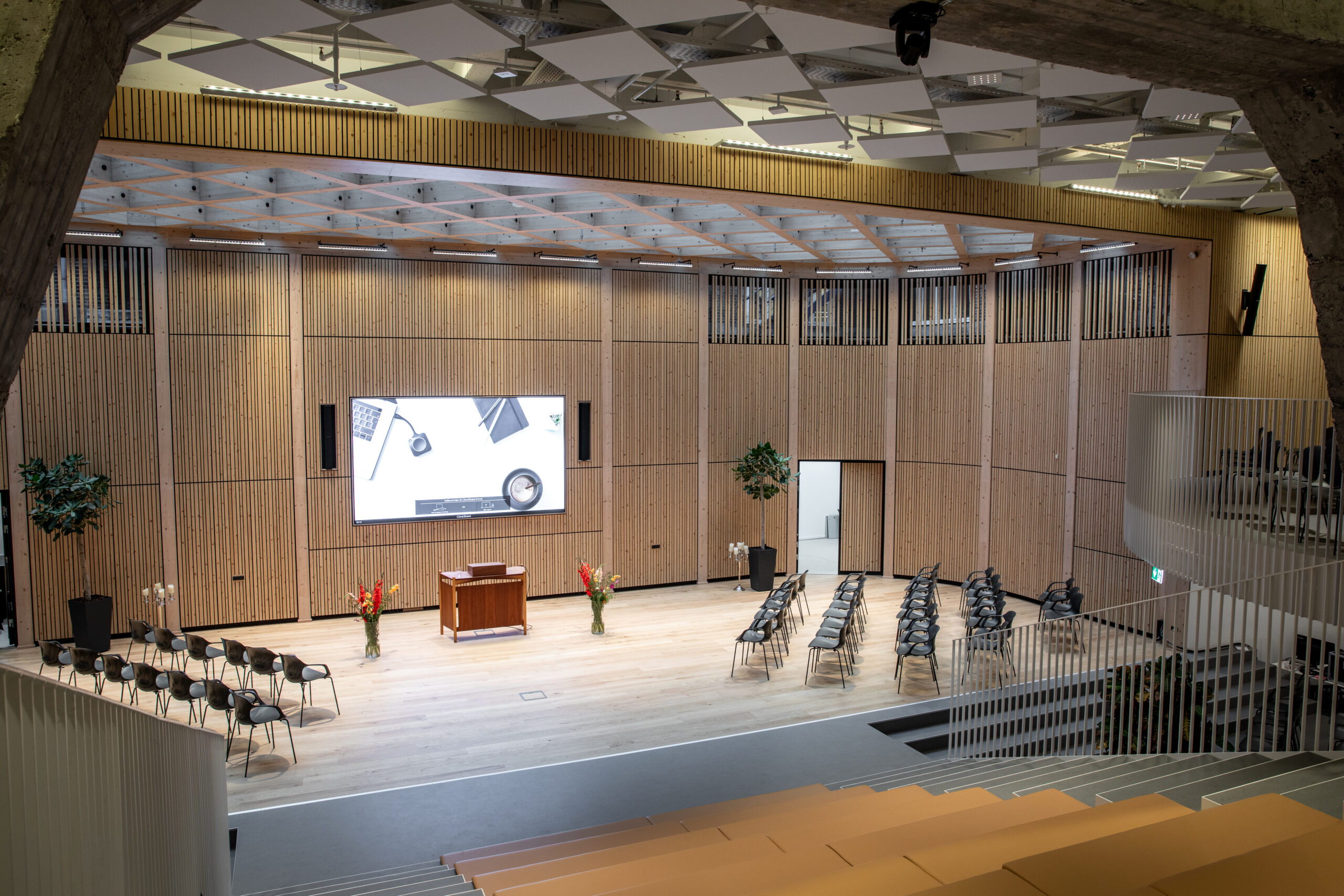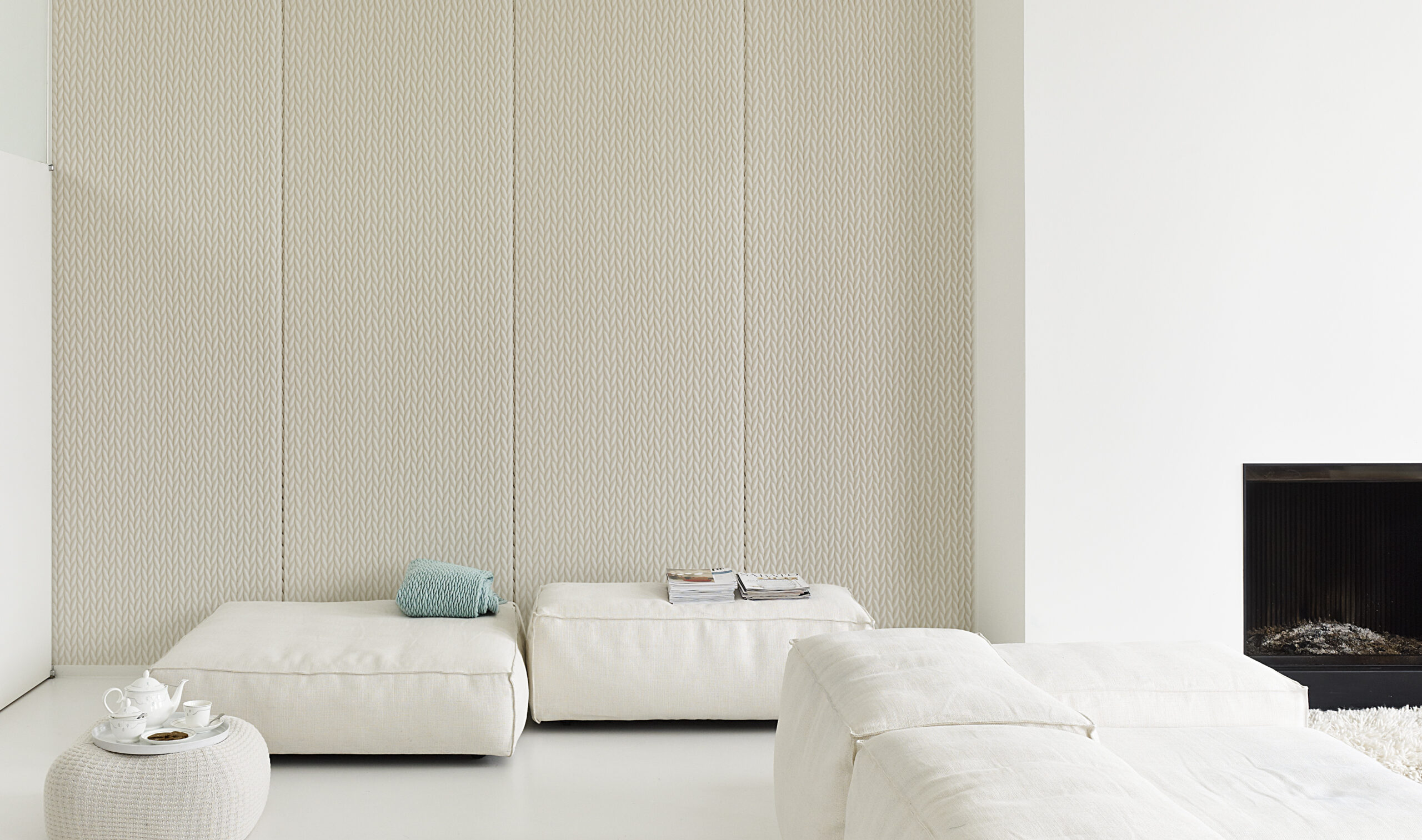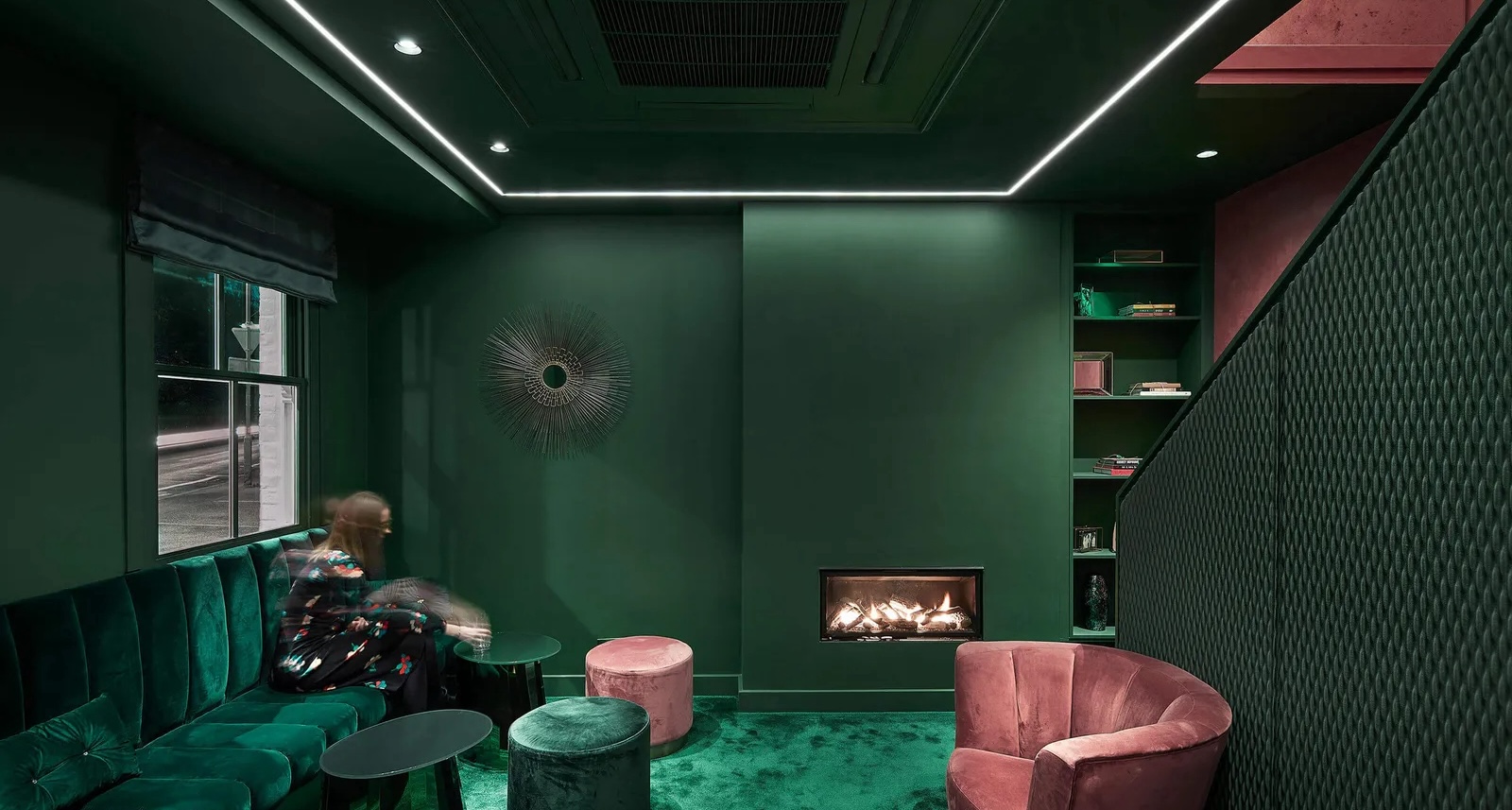The Do’s & Don’ts of Acoustic Design
In the multifaceted world of interior design, understanding the nuances of acoustic design is essential. While spaces must of course be aesthetically pleasing, they also need to function well acoustically.
This dual requirement challenges designers to think critically about how spaces not only will look but also sound, before anything gets built.
In this quick guide, we want to help you navigate the complex landscape of acoustic design, simplifying it by offering specific do’s and don’ts that address common acoustic design pitfalls and reveal how effective design can enhance aesthetics, productivity, and wellness.
Do: Embrace High Ceilings with Smart Acoustic Treatments
High ceilings are often praised for their majestic appearance and the expansive feel they impart to interiors.
However, they can also introduce challenges in acoustic management, particularly in environments requiring nuanced sound control such as libraries and conference rooms.
High ceilings may lead to longer reverberation times, where sounds linger and potentially muddy speech clarity. To mitigate these effects, designers should incorporate acoustic treatments that complement the aesthetics of high ceilings.
Cladding walls or ceilings with acoustic panels that can absorb and diffuse sound effectively will enhance both functionality and design without detracting from the visual grandeur.
Another strategic approach involves the use of suspended acoustic clouds or decorative acoustic lighting, hung over key areas like conference tables or social zones, to precisely manage sound where it is most crucial, aligning acoustic control with design intent.

Don’t: Allow Echoes to Compromise Spacious Interiors
Echoes can significantly degrade the auditory experience in large, open spaces where sound travels freely over great distances.
This issue is often overlooked in the visual grandeur of spacious designs. To prevent echoes from overwhelming these spaces, integrate acoustic solutions that catch and manage soundwaves effectively.
Acoustic panels should be positioned strategically—near sound sources or at key reflection points like room corners—to tackle echoes before they spread.
Variable-height ceiling baffles can also be used to interrupt sound paths and reduce echoes, all while maintaining the space’s perceived openness.
These solutions should not only perform effectively but also integrate seamlessly with the existing design, enhancing the overall aesthetic.

Do: Opt for Minimal Yet Effective Acoustic Materials in Smaller Spaces
In smaller spaces, the temptation to overuse sound-absorbing materials can lead to a stifling, overly muted environment.
This is particularly detrimental in spaces meant to buzz with lively interactions, such as meeting rooms or dining areas.
A balanced approach with a selective use of materials is key. For example, opting for a 1/2” seamless acoustic wall panel can maintain an open, airy feel while managing sound effectively. Some artistic acoustic panels may have lower NRC, but are perfect for a small phone booth.
Designers can also utilize objects with inherent sound-absorbing qualities, like plush furniture, pouffes, rugs, or partition screens, to keep the space functional and aesthetically uncluttered.
Don’t: Overlook Aesthetics When Selecting Acoustic Materials
Neglecting the aesthetic impact of acoustic materials is a “big no” in acoustic design.
Acoustic elements should be integrated into the space’s design narrative, not just added as afterthoughts for functionality.
Acoustic panels offer a range of textures, colors, and forms that can complement and even enhance the interior design.
Creating feature walls with patterned acoustic panels or using panels with nuanced colors can add visual interest and help delineate different zones within a space, achieving a harmonious balance where form meets function.

Don’t: Over-utilize Electronic Cover-Ups in Acoustic Design
While technologies like noise-cancelling devices and white noise machines have their place, they should be seen as a last resort in acoustic design.
Sound masking systems make an office appear quieter by actually raising the ambient noise levels.
… Is that really what you want?
The primary strategy should focus on using passive sound-absorbing materials to control noise levels from the outset, before adding in extra noise!
High-performance acoustic surfaces integrated into ceilings and walls can effectively reduce ambient noise while preserving the architectural integrity of the space, enhancing calm and productivity.
Consider the arrangement and materials of furniture and flooring as part of the acoustic plan, choosing options that naturally enhance sound quality.
When additional control is necessary, active noise technologies can complement, not replace, fundamental acoustic strategies, ensuring that technology supports rather than detracts from the acoustic and aesthetic quality of the space.

Mastering the Art of Acoustic Design
Mastering acoustic design is crucial for creating spaces that are both visually appealing and acoustically functional.
By understanding and implementing these do’s and don’ts, designers can ensure their projects resonate well on all sensory levels.
Effective acoustic design significantly enhances the quality of the environment, making spaces more enjoyable and livable.
Keep these principles in mind to take your next project to the next level. When the client walks in and feels immediately comfortable in their new space, they might not know why, but you will.




